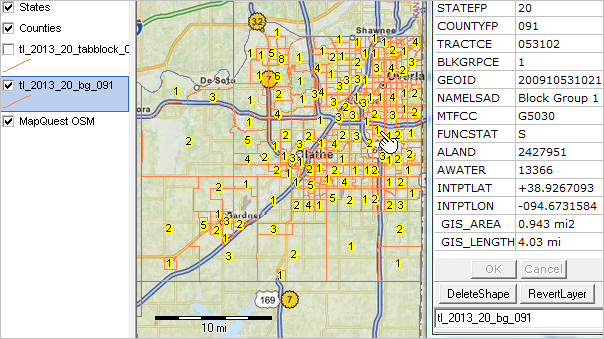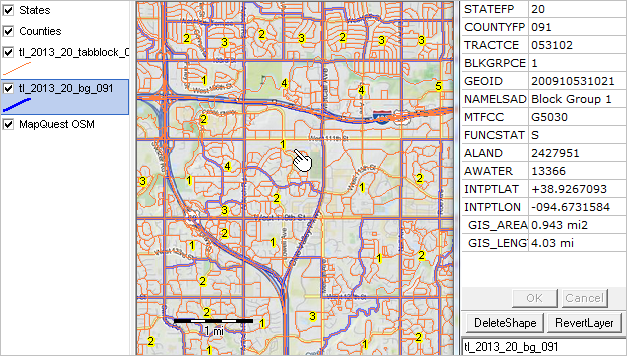
Block Group |

|

|

|

|

|
||
Block Group |

|

|

|

|

|

|
|
|
||
Related Sections
http://proximityone.com/blockgroups.htm
Block groups (BGs) are the smallest areas for which American Community Survey data are tabulated.
BGs are the smallest post Census 2000 for which "richer demographics" are available.
Overview -- Scroll section
Blocks GIS Project http://proximityone.com/dmd/2/blocks_bgs.zip
tl_2013_20_bg illustrative view

Zoom-in view -- block group 1 in tract 053102 in county 091 in state 20

tl_2013_st_bg dbf attributes
| Block Group State-based Shapefile Record Layout (Current) | |||
| tl_2013_[state FIPS]_bg.shp | |||
| Field | Length | Type | Description |
| STATEFP | 2 | String | Current state FIPS code |
| COUNTYFP | 3 | String | Current county FIPS code |
| TRACTCE | 6 | String | Current census tract code BLKGRPCE 1 String Current block group number |
| GEOID | 12 | String | Census block group identifier; a concatenation of the current state FIPS code, county FIPS code, census tract code and block group number. |
| NAMELSAD | 13 | String | Current translated legal/statistical area description and the block group number |
| MTFCC | 5 | String | MAF/TIGER feature class code (G5030) |
| FUNCSTAT | 1 | String | Current functional status ALAND 14 Number Current land area |
| AWATER | 14 | Number | Current water area |
| INTPTLAT | 11 | String | Current latitude of the internal point |
| INTPTLON | 12 | String | Current longitude of the internal point |